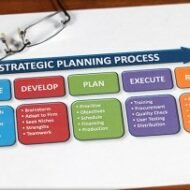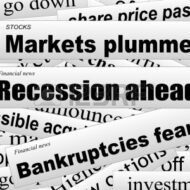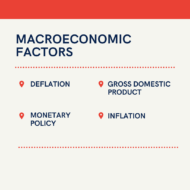Posted by Managementguru in Change management, Decision Making, Entrepreneurship, How To, Human Resource
on Jul 23rd, 2015 | 0 comments

I was going through this quote by Vince Lombardi the other day and couldn’t control my amusement and laughter for some time. “If you aren’t fired with enthusiasm, you will be fired with enthusiasm.” But the truth behind this statement looms large in front of all HR professionals when they start working for an organization in whatever capacity. Results, Targets, Closing the sale, Clinching the deal are the inevitable management mantras that drive the executives crazy. Isn’t it funny that it is very important to keep the morale high of the survivors during a layoff strategy! How on earth one can expect such a thing to happen when you know the sword is dangling above your head too! Please remember, “Resources are hired to give results, not reasons.” You need to be a star performer the first time and every time. Why Downsizing Happens? When the management of an organization finds out that their organization is not operating at peak efficiency, they naturally look for ways to make the organization more productive. This is seldom accomplished via organizational downsizing, which is a reduction in organizational size and operating costs implemented by management in order to improve organizational efficiency, productivity and/or the competitiveness of the organization. Courtesy: Cartoonstock.com Organizational downsizing affects the work processes of an organization since the end result of the downsizing is typically fewer people performing the same workload that existed before the downsizing took place. Download this Team Meeting Planner and Let us Know if You Found it Useful Team-Meeting-Agenda-PlannerDownload The act of downsizing results in two categories of people: victims, the people who involuntarily lose their jobs due to organizational downsizing, and survivors, the employees who remain after organizational downsizing takes place. When is Downsizing the Answer and How to Do it Right? “When downsizing is a knee-jerk reaction, it has long-term costs.” In order for an organizational downsizing to be most effective, management must connect openly and honestly with their employees concerning the reason for the downsizing and the downsizing plan. Managers also need to listen to employees and provide comfort when necessary in order to keep the morale high among the survivors of the downsizing. It is also important that management take steps to prepare the workforce in advance of the downsizing. Proper planning includes outplacement strategies, which is the process of supporting former employees in finding new employment and training and re-skilling the remaining workers into their new jobs. By treating the victims of downsizing fairly and compassionately, the survivors of the downsizing are more likely to remain loyal to their organization. Best Practices for Managing the Downsizing Process Be transparent about the current conditions that the organization faces and the potential impact on the workforce.Treat laid-off employees with respect and sensitivity.On the day of discharge, give employees options on how they want their exit handled.Ensure that procedures used to make decisions are seen as just and fair.Carefully examine the impact of employment downsizing on all HR systems.Give survivors a reason to stay and new hires a reason to join. Kim Cameron’s 3 Types of Downsizing Strategies 1. Workforce Reductions – short-term strategy to cut the number of employees through attrition, early retirement or voluntary severance packages, and layoffs or termination. 2. Work Redesign – medium-term strategy in which organizations focus on work processes and assess whether specific functions, products and/or services should be eliminated. 3. Systematic Change – long-term strategy that changes the organization’s culture and attitudes, and employees’ values, with the goals of reducing costs and enhancing quality. Why Do Organizations Downsize? Declining profitBusiness downturn or increased pressure from competitorsMerging with another organization, resulting in duplication of effortsIntroduction of new technologyThe need to reduce operating costsThe desire to...

Posted by Managementguru in Business Management, Marketing, Principles of Management, Strategy
on Mar 16th, 2014 | 0 comments

Strategies to Tide Over Competition Distinctive Competence: is nothing but a set of unique capabilities that certain firms possess allowing them to make inroads into preferred markets and to gain advantage over the competition. Human brain is the greatest think tank and it evolves new methodologies of business management from time to time in order to sustain as well as win the race. Planning is the key factor that decides the rise or downfall of a business empire. “Where we are?” and “Where we want to be in the next few years?” is how every business leader’s basic thought process must be, without which he cannot proceed further in the competitive corporate environment. If we call planning as the basement of a building, then it should be very precise, clear cut and robust so that the business empire built on this basement will never collapse and it will also serve as a role-model for everyone who aspires to set his foot in the corporate business world. At the corporate level, strategic planning helps to establish the Purpose Mission and Objective for the firm as a whole and “outlines the overall plan to attain them.” Strategy is nothing but a unique set of action plan that will distinguish you from your competitors and make you have an edge over them. Likewise strategic planning is nothing but thinking out of the box to” CREATE YOUR OWN NICHE MARKET” in the business environment. STRATEGIC COMPETENCE takes you to the top of the ladder; but to withhold your position you need to formulate innovative ideas to tide over the challenges in the market. Strategic planning facilitates this process by giving you time frame to complete your short term objectives and long term goals. Infographic Courtesy: The 4 key sources to seek insights for marketing planning Planning for SBU’s: Business level planning is done for the enterprise’s STRATEGIC BUSINESS UNITS or SBU’S. These are individual” cash cows” that makes your business noteworthy and also brings in constant revenue to run your other units successfully even in periods of recession or if a particular product is not that successful as you might have expected it to be. I shall compare a business plan to a travel plan. Both involve planning, resources, capital, marketing and so on. . . Both have starting points but a business plan and its objectives never end and you can never come back to the starting point in a business as that of a travel, because you only expand and grow to greater heights in a business provided your plan is pucca. And also the strategy seeks the integration and control of marketing, finance, production and human resources at the functional level. Strategic Plans at different functional levels: Strategic plans at different levels must be integrated to ensure that they work in tandem and reinforce each other, thereby contributing to the corporate level strategy adopted for the entire corporate group. I would call strategic planning as” INTELLIGENCE DESIGN CHOICE ACTIVITY “adopted by a corporate and it has become an inevitable feature in the directory of the business world....

Posted by Managementguru in Business Management, Economics, International Business, Principles of Management
on Feb 16th, 2014 | 0 comments

The factors that affect the economic environment of business are listed below. Macro Environment The management of a firm is influenced and affected by many factors that exist in the external environment, also called as macro environment. These are beyond the scope of business control and affect the functioning of a business enterprise. Factors of External Environment that Affect Business These factors may present themselves in the form of opportunities or threats and it is the responsibility of a manager to identify the changes in the external environment, be it, social, economic, political, legal, technological, demographic or ecological and devise action plans accordingly, to suit the changing demands and needs of the macro environment. Buying Power of People The most important and prime factor that affects a firm’s operations and its basic survival is the economic factor. Economy of a country is prosperous only when it is self sufficient and withstands the pressure of inflation or recession. Businesses can flourish only if there is a regular demand for the products manufactured. Economic Factors that Affect Demand The buying power of people and their willingness to pay are also important economic factors that affect demand. In developing countries, people concentrate on “saving” rather than spending, where the economy is showing steady growth. For instance in India, people invest their money in gold and land,both being considered as solid appreciating disposable income,assets. Why do we turn to nonprofits, NGOs and governments to solve society’s biggest problems? Michael Porter admits he’s biased, as a business school professor, but he wants you to hear his case for letting business try to solve massive problems like climate change and access to water. Why? Because when business solves a problem, it makes a profit — which lets that solution grow. Watch the Video Disposable Income The ability of people to buy, largely depends on their employment, income tax and price of the product. The disposable income of people in developing countries is very meager and it further decreases if the rate of tax increases. Ability to Buy This also affects his or her ability to buy. If his concentration is on “saving”, again his ability to purchase is restricted. Even if the individual has the purchasing power, there is no assurance that he or she will buy, it all depends on their willingness to buy. The purchasing power parity of developing countries is very low when compared to developed countries. Role of Technology In recent times, technology also has played an enormous role in bringing an array of new products into the market, and has improved man’s preference for better products. For a business firm, it is very difficult to predict people’s preference as well as changes in their preferences. It needs a great deal of market research and regular updations. If the prices are in decreasing trend, people will not buy the product immediately; they will wait for some more time to derive maximum benefit or value out of their purchase. So, people’s perception about the market economy, social influences and changing preferences definitely affect the willingness to buy. Competitive Market Managing the competition proves to be a tougher task for each and every individual business firm. In today’s modern high flying business environment, people always expect value added services for the products purchased. Business organisations are in a position to compete for customer’s interest as well as income. Firms think of price reductions, aggressive promotional efforts, attractive offers, differentiated product offerings and customer service as competitive tools to have a sustainable and distinctive advantage over others. Offering new product designs, attractive packing, extended credit facilities, free door delivery and fast and competent repair services...

Posted by Managementguru in Economics, Human Resource
on Feb 16th, 2014 | 0 comments

Key Issues of Unemployment Stats: The population of India has increased by more than 181 million during the decade 2001-2011. The population of India, at 1210.2 million, is almost equal to the combined population of U.S.A., Indonesia, Brazil, Pakistan, Bangladesh and Japan put together (1214.3 million) Important questions relating to unemployment The unemployment rate in India is estimated at 9.4 percent or 94 persons out of 1000 persons How can millions of people be unemployed when so much of work has to be done? What flaw in the modern mixed economy forces so many who want to work remain idle? Should nations take steps to alleviate the hardships of joblessness? Do high unemployment benefits just reduce the incentive to work and end up raising the unemployment rate? These questions always come up every time there is a rise in the unemployment ratio. Unemployment continues to plague the modern world. Another reason which can be attributed to unemployment is that, there exist a lack of correlation or can we call it a ‘mismatch’ between the subject of study and the line of action. It has been stated that for every two percent fall in the GDP, there is one percent rise in unemployment rate. The association between the output market and the labor market can be clearly understood from this statistics. Economic as well as a social problem Unemployment is not only an economic problem but also a social problem. As an economic problem, it is a waste of valuable resources. As a social problem, it is a source of enormous suffering, as unemployed workers or workers who are temporarily employed suffer and struggle due to reduced incomes. The distress spills over to affect people’s emotions and has a direct impact on their family lives. A mismatch between the supply and demand of workforce also can create what is called as structural unemployment. This can happen because the demand for one kind of labor is rising while the demand for any other kind is falling and supplies do not quickly adjust. Cyclical unemployment is another kind, where the overall demand for labor is low. Picture Courtesy: Businessinsider Recession We have seen that unemployment and recessions impose great costs on societies. Yet countries do not attempt to reduce unemployment to zero or even close to zero. Moreover when output approaches its potential, the central banks often begin to raise their interest rates and slow the expansion. Just why is that, countries don’t stimulate their economies until involuntary unemployment disappears? The reason is that super-full employment leads to shortage in labor and product markets and soon inflation would rise to intolerable levels. Business Cycle Business cycle is one of the key issues of macro economics. The economic pattern of a country never follows a smooth trend. Several years of economic prosperity will be followed by a sudden recession or a panic. Then the national output falls, real income declines followed by a jump in unemployment rates to uncomfortably high levels as legions of workers lose their job. Eventually the bottom is reached and recovery begins. There exist many theories to explain the cyclical pattern of an economy but none is valid at all times and places. Governments have to anticipate recessions and stop them from snowballing into depressions. Crude oil price is an important economic indicator for developing nations which helps them to predict the fluctuations in the business cycle that is to follow. Related Posts: 1. How to Make Money Selling Anything and Everything 2. Photoshop CS6 Crash Course...

Posted by Managementguru in Economics
on Feb 16th, 2014 | 0 comments

Science of Macro Economics: Macroeconomics is the branch of economics that studies the behavior and performance of an economy as a whole. The part of economics concerned with large-scale or general economic factors, such as interest rates and national productivity. The sales and profit quotient of business enterprises in a market is dependent on the vigor of the overall economy to a greater extent. During expansion, the real GDP can accelerate to 4 to 5 % a year and during recessions the pace of growth declines for an extended period. The overall economic growth is subject to many cyclical fluctuations and the reasons for change in the pace and pattern of economic scenario still remains a mystery. Macroeconomic Concept What are the fundamental concerns of macro economics? Business Cycles: Business cycles are rhythmic patterns of expansion and contraction due to inflations and recessions. It is still an intriguing factor that unemployment persists even during times of expansion and production of goods and services fall down during cyclical downturn making millions of people lose their job. If macroeconomics can find the appropriate solution to these problem situations, better will be the prospects of many people’s lives and fortunes. Monetary and fiscal policies should be formulated in the light of reducing the severity of business cycles. The purpose of monetary policies is to stabilize the prices by managing the expansion and contraction of the volume of money in circulation, full employment and stability of exchange rates. Fiscal Policy: Fiscal policy is linked with the government’s stand on public revenue, expenditure and debt. The idea is to reduce inequalities in income and wealth and develop a socially optimum investment pattern. Resources available in a country influence the kind of investment pattern. Developing countries like India has its focus of activity centered on telecommunication and power generation through information technology and alternate fuel resources. Availability of skilled labor is an additional plus in countries like India and China and many countries prefer to outsource their business processes to offshore companies present here. Tax Structure: Tax structure is a source of revenue generation aimed at economic stability. During inflation, an increase in tax rates will reduce the buying power of people thereby reducing the prices in the economy. A reduction in tax rates during depression will encourage economic investment and consumption. Generous subsidies and reforms in industrial policies alone cannot bring about the desired growth in the economy. A nation should aspire to increase its growth ratio by providing the necessary infrastructure. Economic scholars of each nation have to vigilantly analyze the previous patterns of business cycles for the benefit of the society and this kind of review will lead to dependable forecasts on the basis of which proactive measures could be devised. Note: What is VAT: VAT is a multi-point levy where the tax paid on local purchases from the registered dealer can be set off against the tax payable on the sale of goods, other than special...










